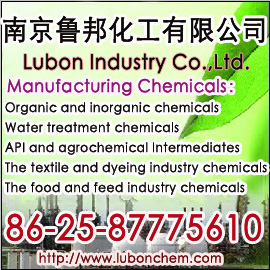Name: potassium pyrophosphate
Formula: K4P2O7
Molecular Weight: 330.34
CAS No. :7320 -34-5
EINECS :230-785-7
HS CODE: 28353990
Grade: Food Grade / Industrial / plating grade
Tetrasodium pyrophosphate, potassium has excellent complexing ability, hard water and Ca2 +, Mg2 + to form stable complexes thereby soften hard water, improving the ability to wash, to remove dirt. Also in iron, lead, zinc and other metal surface to form a protective film to prevent iron, lead, zinc and other metal surfaces from corrosion. Pyrophosphate ions (P2O74-) with the very finely divided solid dispersing ability to promote the fine, homogeneous mixing of trace substances. A stable pH buffer capacity, long-term keeping the pH of the solution.
Applications and uses of introduction
Tetrapotassium pyrophosphate plating level for non-cyanide plating, a plating of complexing agent, is also used for surface treatment, i.e., as a pretreatment agent for plating and pyrophosphate plating solution.
Four industrial grade potassium pyrophosphate is widely used in paints, cleaning supplies, boiler off dirt, oil drilling, textile auxiliaries and other areas in the industry as a high-grade detergents, cleaning agents, dispersing agents, buffers, etc., is lining formulated detergent ingredients, and the metal surface cleaner detergent bottle components, additives, various cleaning agents, dispersing agents and buffers as the clay ceramic industry dispersants, pigments and dyes, the dyeing industry for a small amount of water removed ferric ions to improve the quality of dyeing.
Food additive Food Grade tetrapotassium pyrophosphate for food processing, emulsifiers, texture improving agents, chelating agents, quality-improving agent, in the food industry as emulsifiers, chelating agents, alkaline agents pasta with raw materials; prevent discoloration of canned fruit; improve the degree of swelling of ice cream and ham, sausage yield; enhance fish water holding capacity, improve the taste of pasta, increase yield and prevent aging cheese.
Non-cyanide plating as complexing agent
1 of Cu2 +, Sn2 +, Ag +, Zn2 +, Ni2 +, Cr3 +, Ca2 +, Mg2 + and other multivalent cations with excellent complexing ability;
2, the 100ml1% of THF was added dropwise 2.5 (ml) min1% silver nitrate solution, and the resulting white precipitate was quickly clear solution is complexed.
3 bath with excellent polarization capability, current spreading ability, preparation of the bath can be directly without going through an electrolytic plating process, while Plating fast, uniform coating, the crystal structure of the rules, fine, dense non-porous, plating liquid stable, strong anti-interference ability and simple maintenance.
4, the finely divided solid material has a strong ability to disperse;
5, a stable pH buffer capacity.
Determination of complexing capacity
Weighing 1.000g potassium pyrophosphate dissolved in distilled water diluted to 100ml, form 1% solution 100ml, 100ml solution was added dropwise to a 1% silver nitrate solution and stirred to produce a white precipitate can be completely complexed ended, the recording amount of a solution of 1% silver nitrate solution (ml) complexing capacity index is potassium pyrophosphate.

